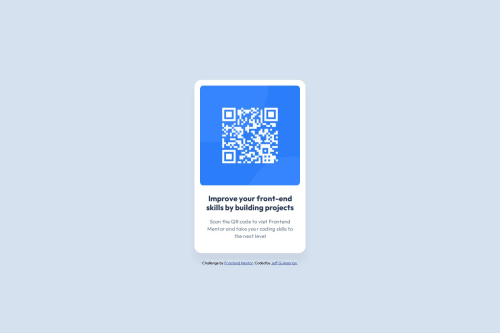QR Component Card - Second Solution

Solution retrospective
While this is an easy challenge, I wanted to take the opportunity to pass through each of the Frontend Mentor learning paths. This was the first project required, so I decided to challenge myself to see how quickly I could create the component. I was very happy with my time. Then, I decided to add a couple of extras: turn the QR code into a live link (for those who would view it on a computer screen, but didn't want to go to the site on their cell phone) and add a drop-shadow hover effect.
What challenges did you encounter, and how did you overcome them?No challenges in this project since I have done it before.
What specific areas of your project would you like help with?What I would like help with is understanding GitHub more and becoming more proficient in utilizing what it has to offer. I find that I struggle with having a design work fine in my browser, but when it is published from GidHub Pages, the effects don't work or the image does not show up. I have reduced my frustration by avoiding the leading "/" in references to images or stylesheets but it still does not seem to work in every circumstance. If anyone has some better insight on this, I would really appreciate your help. In fact, if you have any suggestion at all, I would love to hear it.
Happy coding!
Jeff
Please log in to post a comment
Log in with GitHubCommunity feedback
- @nandha126
Your solution is a solid start with clear structure and styling.
Join our Discord community
Join thousands of Frontend Mentor community members taking the challenges, sharing resources, helping each other, and chatting about all things front-end!
Join our Discord